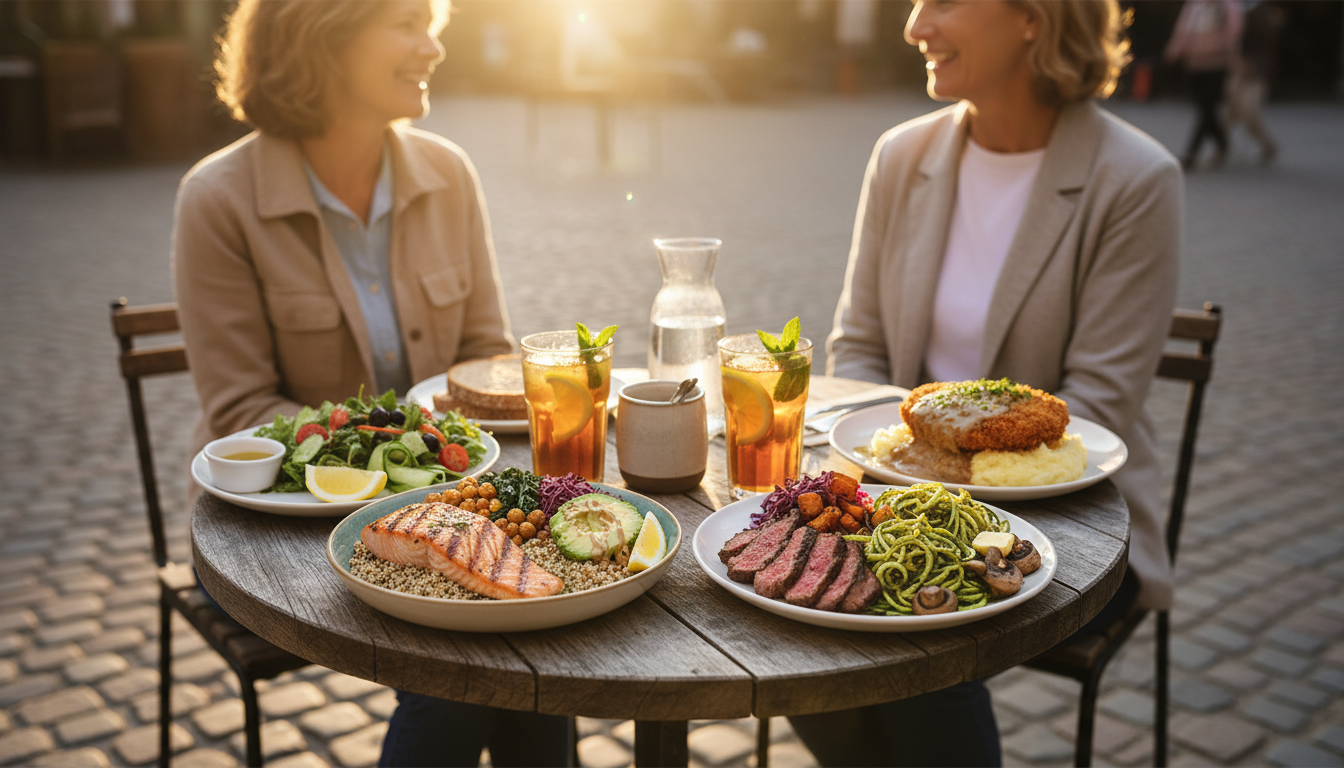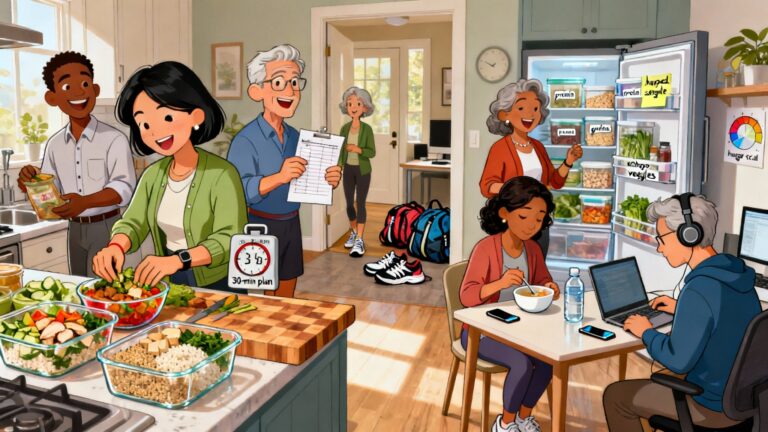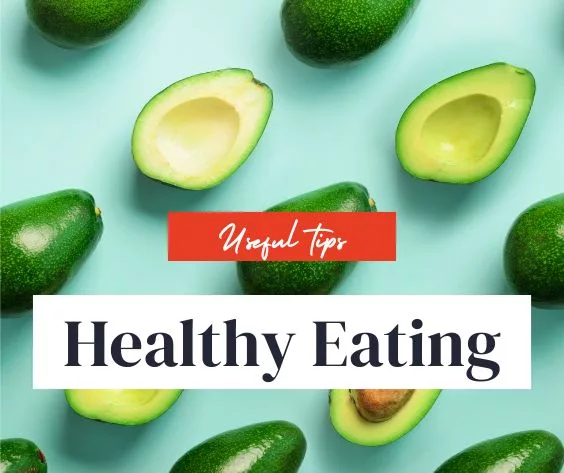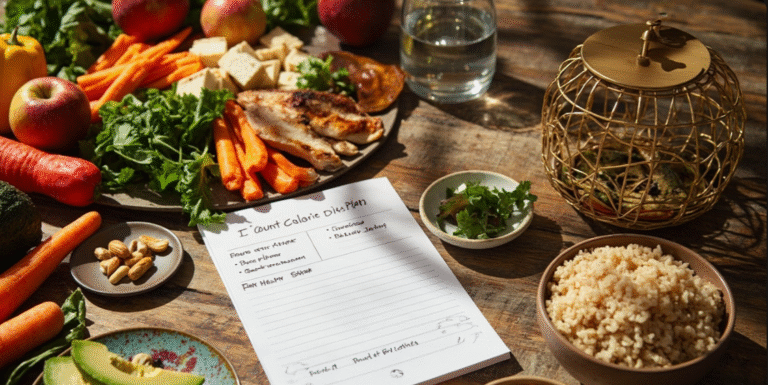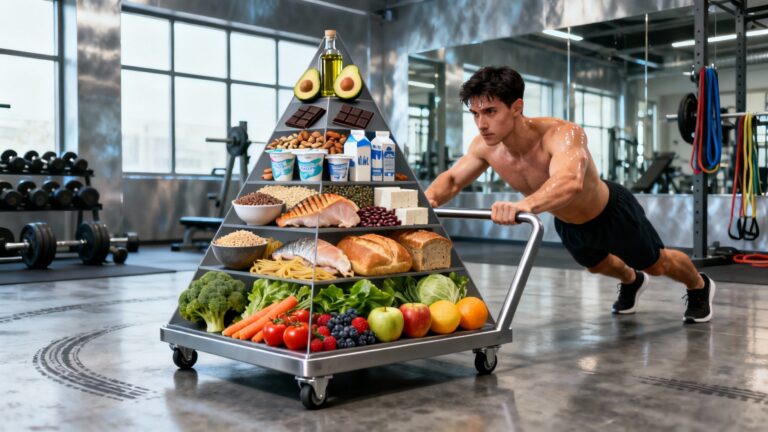Food Lifestyles: Navigating Your Way to a Happier, Healthier You
A warm, witty, practical guide to food lifestyles—what they are, how to choose yours, and how to eat well without stress or guilt.
If your feed looks like a culinary identity crisis—one friend swears lentils saved their life, another treats ribeye like a religion—you’re not alone. Food lifestyles are everywhere, and they can feel loud, confusing, and very “I found the truth in my salad.” Here’s the thing I wish I’d learned sooner: you don’t need the perfect food lifestyle. You need the one that fits your actual life—Tuesday-night-tired life, family-dinner life, travel-life. I’ve tried plenty (some brilliant, some… character-building), and what finally worked wasn’t a diet. It was a rhythm. That’s what a food lifestyle is—your rhythm with food.
This guide tackles on food lifestyles, trims the overwhelm, and gives you simple frameworks so you can find your way—with zero shame, less decision fatigue, and a few well-placed shortcuts. We’ll keep it friendly, a little funny, and honestly useful. Because food should make your life better, not turn into a second job.
What Food Lifestyles Actually Are (And Why They Matter More Than You Think)
I think of food lifestyles as the “how I usually eat” story. Not a two-week challenge or a Monday-only salad habit. Your longer-term pattern: what you cook, what you snack on, what you reach for on autopilot. It’s shaped by your culture, values, budget, time, and how your body feels when you eat certain things. The plate is just the evidence. The reasons run deeper.
Common food lifestyles you’ll see:
- Omnivore: eats plants and animals. Most of us live here.
- Vegetarian: skips meat but may include eggs and dairy.
- Vegan: no animal products, including dairy, eggs, and honey.
- Flexitarian: mostly plants, sometimes meat or fish—flexible by design.
- Mediterranean: vegetables, legumes, whole grains, olive oil, fish, nuts, yogurt; minimal sweets and red meat.
- DASH: whole foods with an emphasis on fruits, veggies, low-fat dairy, and lower sodium to support blood pressure.
- Keto: high-fat, very low-carb to trigger ketosis.
- Carnivore: animal products only.
Why it matters: your consistent pattern (not one “perfect” day) controls how you feel—energy, mood, sleep—and your long-term health. I’ve been that person who hit a calorie target with gummy bears and cold brew. Technically impressive; emotionally a train wreck by 3 p.m. The day I shifted to real, fiber-rich food—whole grains, veggies, fruit, lean or plant proteins—everything smoothed out. Fewer cravings, steadier energy, and no 4 p.m. “why am I mad at air?” moments.
A Tour of Food Lifestyles: From Plant-Power to Protein-Heavy (No Judgment, Just Clarity)
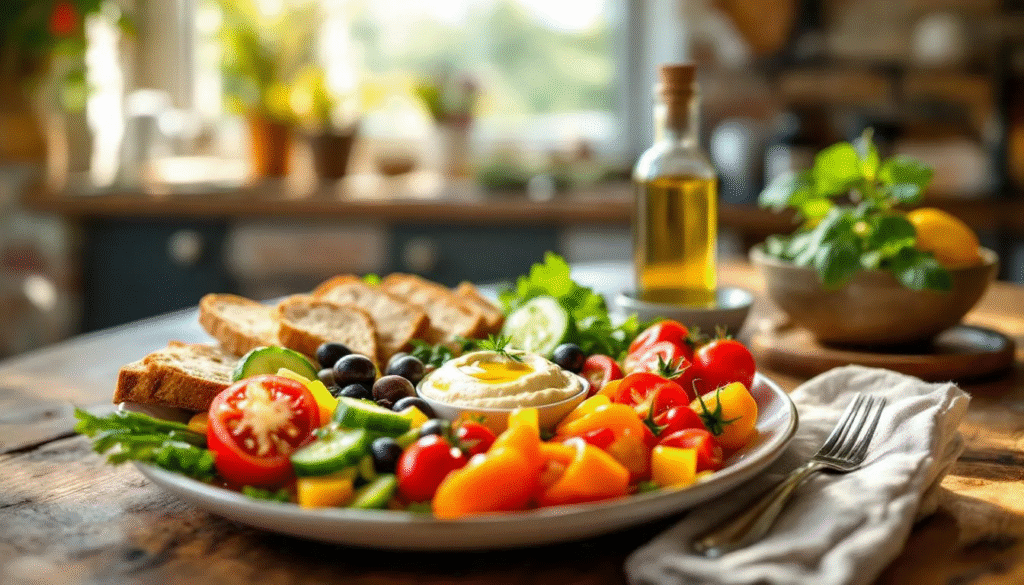
Plant-Based and Vegetarian Food Lifestyles
I have big respect for plant-based eaters—not just for the ethics and sustainability, but for the culinary creativity. You can build a satisfying routine with beans, lentils, tofu, tempeh, nuts, seeds, whole grains, and all the vegetables your crisper can handle.
- Vegetarians: no meat, often include eggs/dairy.
- Vegans: no animal products at all.
The protein question? Totally solvable. Legumes + grains + soy foods + nuts/seeds add up fast. Two practical notes if you go this route:
- Mind the essentials: B12, iron, calcium, vitamin D, iodine, omega‑3s. Fortified foods and a simple B12 supplement help a lot.
- “Vegan” doesn’t automatically mean “nutritious.” I tried “lazy vegan” for a month and accidentally majored in fries. Would not recommend.
What I love: plant-based eating often feels abundant—big bowls, bright flavors, fiber that keeps you full. When I nail a good chickpea curry, I don’t miss meat at all. When I don’t plan? Hello, crackers-for-dinner chaos.
Flexitarian: The Middle Lane Most People Actually Stick With
Flexitarian is the food lifestyle I recommend most to friends who want better health without a total identity shift. It’s plant-forward with room for meat or fish when you want it—at home, at Grandma’s, or at the “BBQ where the sides are potato salad and potato salad.”
Why it sticks:
- No “never again” foods—less rebellion, more progress.
- Socially easy and affordable.
- You still get many plant-based benefits.
For me, flexitarian felt like flipping a switch from “dieting” to “living.” I eat plants most of the time, fish twice a week, and treat meat like a supporting character instead of the star. It’s flexible enough for real life but structured enough to feel good.
Keto and Carnivore: Results-Forward, High-Commitment
Keto slashes carbs to push your body into ketosis, using fat for energy. Carnivore removes plants entirely.
Upsides people report:
- Fast early weight loss.
- Fewer cravings for some.
- Steady energy for certain folks.
Cautions from the trenches:
- Keto’s saturated fat can creep up fast; you have to be intentional with olive oil, avocado, nuts, and fish.
- It’s restrictive, which can make social life and travel tricky.
- Carnivore skips fiber completely—and your gut loves fiber more than your coffee loves creamer.
I tried keto. Day five, I almost wrote poetry about toast in a grocery aisle. If carbs are a love language for you, there are gentler food lifestyles that still move the needle.
Mediterranean and DASH: The “Boring (But Brilliant)” Champions
If food lifestyles were kitchen tools, these are the cast-iron pans: reliable, versatile, and they age well.
- Mediterranean: vegetables, legumes, whole grains, olive oil, fish, nuts, yogurt, herbs; minimal sweets and red meat. Think color, flavor, and satisfying meals that don’t need a calculator.
- DASH: fruits, vegetables, whole grains, low-fat dairy, lean proteins, nuts; lower sodium. Very steady for blood pressure and overall wellbeing.
When I eat “Mediterranean-ish,” my life feels easier: sheet-pan salmon, lemony greens, whole grains, a handful of nuts. It’s healthy without turning dinner into a math equation.
How to Choose a Food Lifestyle You’ll Actually Keep

Most people fail not because they chose the “wrong” food lifestyle—but because they chose one that doesn’t fit their life. Your schedule, budget, health needs, preferences, and culture matter. Your food lifestyle should flex around you, not the other way around.
Ask yourself:
- Which meals are easiest for me to improve first—breakfast, lunch, or dinner?
- What do I love eating that I can keep?
- Where do I need convenience most (mornings? travel? late nights)?
- Do I prefer clear rules or broad guidelines?
- What’s my non-negotiable (coffee, sourdough, Grandma’s Sunday pasta)?
Then use these quick-win frameworks to simplify your choices.
- The 1–2–3 Plate Formula
- 1 protein (beans, tofu, fish, chicken, eggs, tempeh)
- 2 plants (vegetable + fruit, or two vegetables)
- 3: one fist-sized whole grain or starchy veg (brown rice, quinoa, farro, potatoes)
It works for any food lifestyle and cuts decision fatigue. I default to this on busy nights, and it saves me from “random snack spiral.”
- Meat-As-A-Side Rule
If you eat meat, make plants the star and keep meat to a palm-sized portion. You automatically eat more fiber and less saturated fat without tracking anything. - 5-Ingredient Label Rule
If a packaged food has more than five ingredients you don’t recognize—or multiple sugar names in the top five—skip it. Simpler foods are usually better foods. - Two-Fish Meals/Week Checklist
Aim for fatty fish twice weekly for those lovely omega-3s. Put it in your calendar like any other appointment so it actually happens. - The 80/20 Compass
Stay aligned with your food lifestyle 80% of the time; leave 20% for life (holidays, travel, cake). This prevents the “I messed up, may as well quit” spiral. - One Upgrade Per Week
Tiny changes compound. Swap white rice for brown, soda for sparkling water, butter-heavy cooking for olive oil, sugary breakfast for protein/fiber. It’s not flashy, but it works.
Your Everyday Blueprint (That Fits Any Food Lifestyle)
- Eat color on purpose. Different colors = different benefits. A plate that looks like a paint swatch usually means you’re covered.
- Prioritize fiber. Whole grains, legumes, vegetables, fruit. On fiber-rich days, I notice my snack monster is much quieter.
- Choose healthy fats. Olive oil, avocado, nuts, seeds, fish. Move butter and ultra-processed snacks to “sometimes.”
- Watch the sodium. Most salt hides in bread, sauces, soups, and packaged foods. Labels help you steer.
- Keep sugar honest. Added sugar isn’t evil; it’s just sneaky. A little joy? Absolutely. A lot, all day? Your energy will file a complaint.
- Hydrate like it’s part of the job. I keep a water bottle on my desk; otherwise my “hydration plan” turns into coffee with a side of… more coffee.
- Cook simple, repeat often. Build 6–8 go-to meals you can make half-awake. Less novelty, more consistency.
Pro tip I swear by: keep frozen vegetables on standby and canned tomatoes in the pantry. They’re the emergency brakes between you and takeout.
Food Lifestyles in Real Life: Eating Out, Parties, Travel, Busy Weeks
- Eating out: Look for the 1–2–3 formula—protein, plants, whole grain. Ask for sauces/dressings on the side. You’re making it easier on future-you, not being difficult.
- Parties: Eat a snack first. Fill half your plate with veggies/salad, add protein, then enjoy the fun stuff you actually want. You can be healthy and human at the same time.
- Travel: Pack a “snack kit” (nuts, simple protein bars, fruit). Airport food becomes a supplement, not your lifeline.
- Busy weeks: Batch-cook a grain (quinoa, farro), a protein (beans, chicken, tofu), and a sheet pan of vegetables. Add sauces (tahini, pesto, salsa) to keep things interesting. Future-you will send present-you a thank-you note.
When I travel, I aim for “mostly aligned, somewhat flexible.” Some of my favorite memories include foods that weren’t “ideal.” Worth it, every time. Then I return to my rhythm.
How to Read Food Labels Without Needing a Nap

Labels go from mystery to map once you know where to look.
- Start with the ingredient list. Fewer, familiar items usually win.
- Sugar aliases to watch: syrup, maltodextrin, dextrose, evaporated cane juice. Sugar in a costume is still sugar.
- Sodium scan: if every item in your cart is “kind of salty,” the day’s total will creep up. Mix in low-sodium staples.
- Fats: minimize saturated fat; skip trans fats—full stop.
- Front-of-box buzzwords (“natural,” “light,” “multigrain”) are marketing confetti. The truth lives on the back.
That one shift—ingredients first—helped me stop falling for “health-washed” snacks. My cart got simpler, my meals got better, and somehow my kitchen got less chaotic.
The Lifestyle in Food Lifestyle: Movement, Sleep, Stress (The Trio That Changes Everything)
Pair your food lifestyle with the other pillars that make it work.
- Move most days. Walk, lift, dance, yoga—whatever gets you going. I love a 20-minute post-dinner walk. Helps digestion, clears my head, and politely suggests I put my phone down.
- Sleep like it’s medicine. On five hours, I crave sugar and salt like a raccoon at midnight. On eight, I make better choices without trying. It’s not willpower; it’s biology doing its job.
- Manage stress on purpose. Five minutes of breathwork, a walk, journaling, prayer—whatever lowers the dial. Stressed me wants chips. Calmer me wants something green with olive oil and lemon.
It’s not about doing everything perfectly. It’s about stacking a few good habits that support each other.
A 7-Day, Pick-Your-Path Menu (Omni, Veg, or Flex)
Use this as a template. Swap proteins/plants to match your food lifestyle. Keep it simple; repeat the winners.
- Breakfasts (rotate):
- Oatmeal + berries + walnuts + cinnamon (vegan with plant milk)
- Greek yogurt + honey + pear + walnuts (vegetarian)
- Eggs + sautéed spinach + whole-grain toast (omni/vegetarian)
- Smoothie: spinach, frozen mango, chia, protein (plant or whey), water/milk
- Lunches (simple, satisfying):
- Big salad: greens + chickpeas or grilled chicken + colorful veg + vinaigrette + seeds
- Lentil soup + side salad + whole-grain bread
- Tuna (or white bean) salad with lemon, capers, herbs over quinoa
- Leftovers bowl: grain + veg + protein + sauce (tahini, pesto, salsa)
- Dinners (1–2–3 in action):
- Salmon + roasted broccoli + brown rice (Mediterranean/DASH-friendly)
- Tofu stir-fry + mixed vegetables + soba noodles (vegan)
- Turkey meatballs + tomato sauce + whole-wheat pasta + arugula salad (omni)
- Chickpea curry + spinach + basmati rice (vegan/vegetarian)
- Shrimp (or tempeh) sheet pan + peppers + onions + farro, lemon-herb drizzle
- Black bean tacos + slaw + avocado + salsa (vegan; add cheese if vegetarian)
- Baked chicken thighs + green beans + potatoes with olive oil and rosemary (omni)
- Snacks (pick 1–2/day as needed):
- Apple + peanut butter
- Carrots + hummus
- Cottage cheese + pineapple (vegetarian)
- Edamame with sea salt (vegan)
- Handful of mixed nuts
- Dark chocolate square if joy is calling
None of this requires perfection—just rhythm. If you have pizza on Friday, enjoy it, hydrate, and move on. Your food lifestyle is a pattern, not a grade.
Common Pitfalls (And Friendlier Replacements)
- All-or-nothing thinking → 80/20 compass. Consistency beats intensity.
- Ignoring protein and fiber → build meals around both. You’ll feel fuller and steadier.
- Confusing plant-based with “ultra-processed but vegan” → read the ingredient list.
- Zero social strategy → decide your “flex plan” before the event. You’re in charge.
- Making 15 changes at once → one upgrade per week. Stack wins.
When I stopped moralizing food (“good/bad”) and started noticing how I felt, everything softened. Less guilt. Clearer choices. Way more peace around eating.
Quick, Human FAQ on Food Lifestyles
- What’s a food lifestyle?
Your long-term pattern with food—habits and choices that repeat most days. It’s the playlist you keep coming back to. - Are plant-based food lifestyles “best”?
They’re excellent when built on whole foods and planned for nutrients like B12 and iron. But Mediterranean, DASH, and flexitarian can be equally great. The “best” one is the one you’ll live with and feel good on. - Can I lose weight by changing my food lifestyle?
Yes—especially when you emphasize fiber-rich foods, adequate protein, fewer ultra-processed items, and reasonable portions. Think sustainable, not extreme. - How do I read labels fast?
Check ingredients first. Fewer, familiar items = better. Then scan sugar, sodium, saturated fat. Ignore front-of-box marketing poetry. - Do movement and sleep matter?
Hugely. They quietly decide a lot of your food choices. Well-rested, less-stressed you makes different decisions than exhausted, frazzled you.
Your Friendly Next Step (Pick One)
Food lifestyles aren’t auditions for moral superiority. They’re tools to help you feel better in your actual life. Whether you land on plant-powered, flexitarian, Mediterranean-ish, or a thoughtful omnivore pattern, the best food lifestyle is the one that gives you energy, fits your routine, and doesn’t make you resent dinner.
Personally, I lean flex‑Mediterranean: lots of plants, olive oil like it’s a hobby, fish twice a week, meat as a side, and an open-door policy for great bread. I feel good, my energy is steady, and I don’t dread meal planning. That’s the whole point.
Pick one small upgrade for this week:
- “Vegetables” — add one extra serving daily.
- “Whole grains” — swap one refined grain for a whole version.
- “Movement” — walk 20 minutes after dinner three times.
Tell me which one you choose—vegetables, whole grains, or movement—and I’ll build you a simple, 7-day plan aligned to your food lifestyle. No lectures, just a friendly nudge and a few easy wins.
And when someone insists their food lifestyle is the only right answer? Smile, enjoy your delicious, aligned meal, and keep going. You’re doing this for your life, not their approval.

